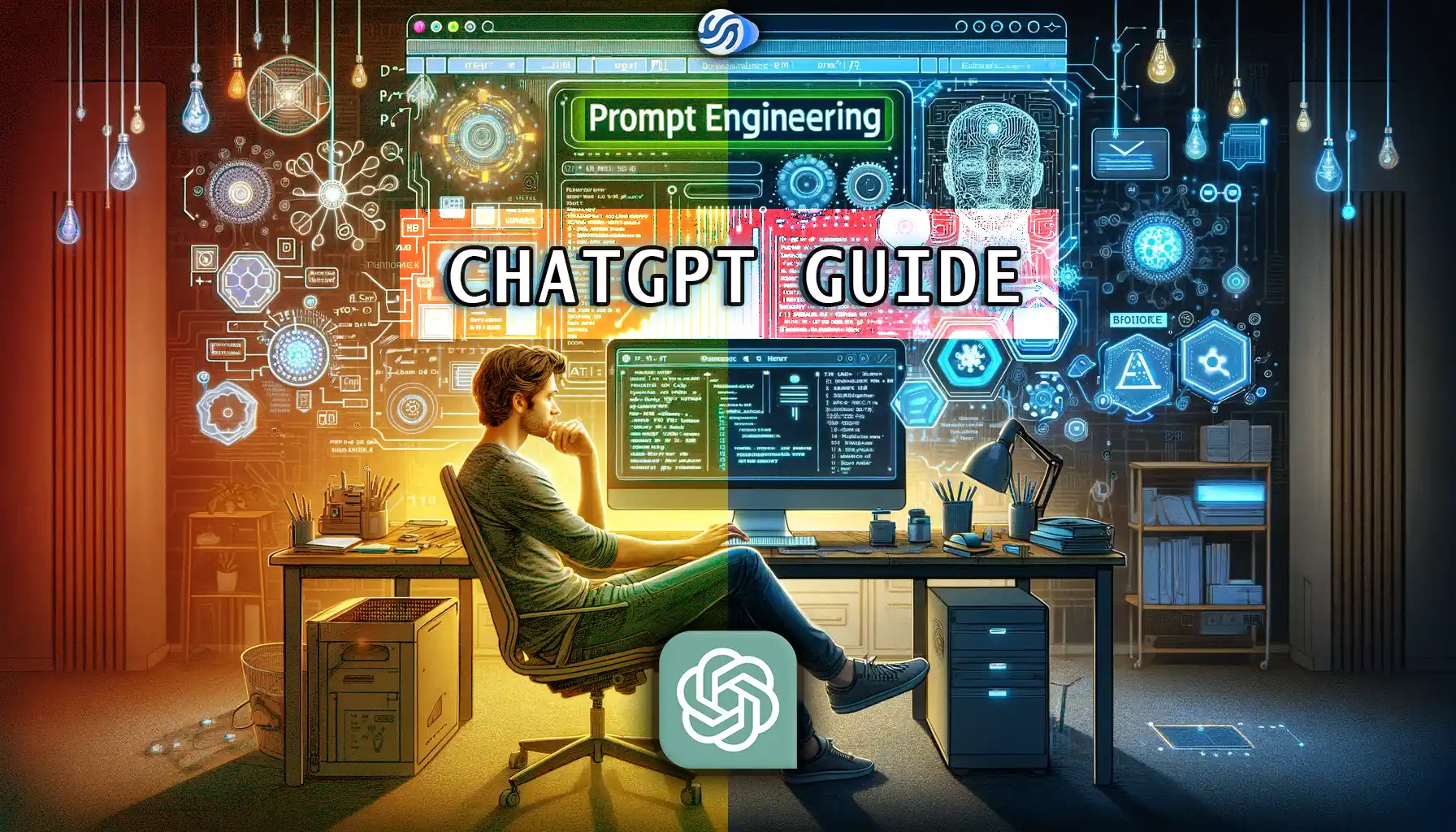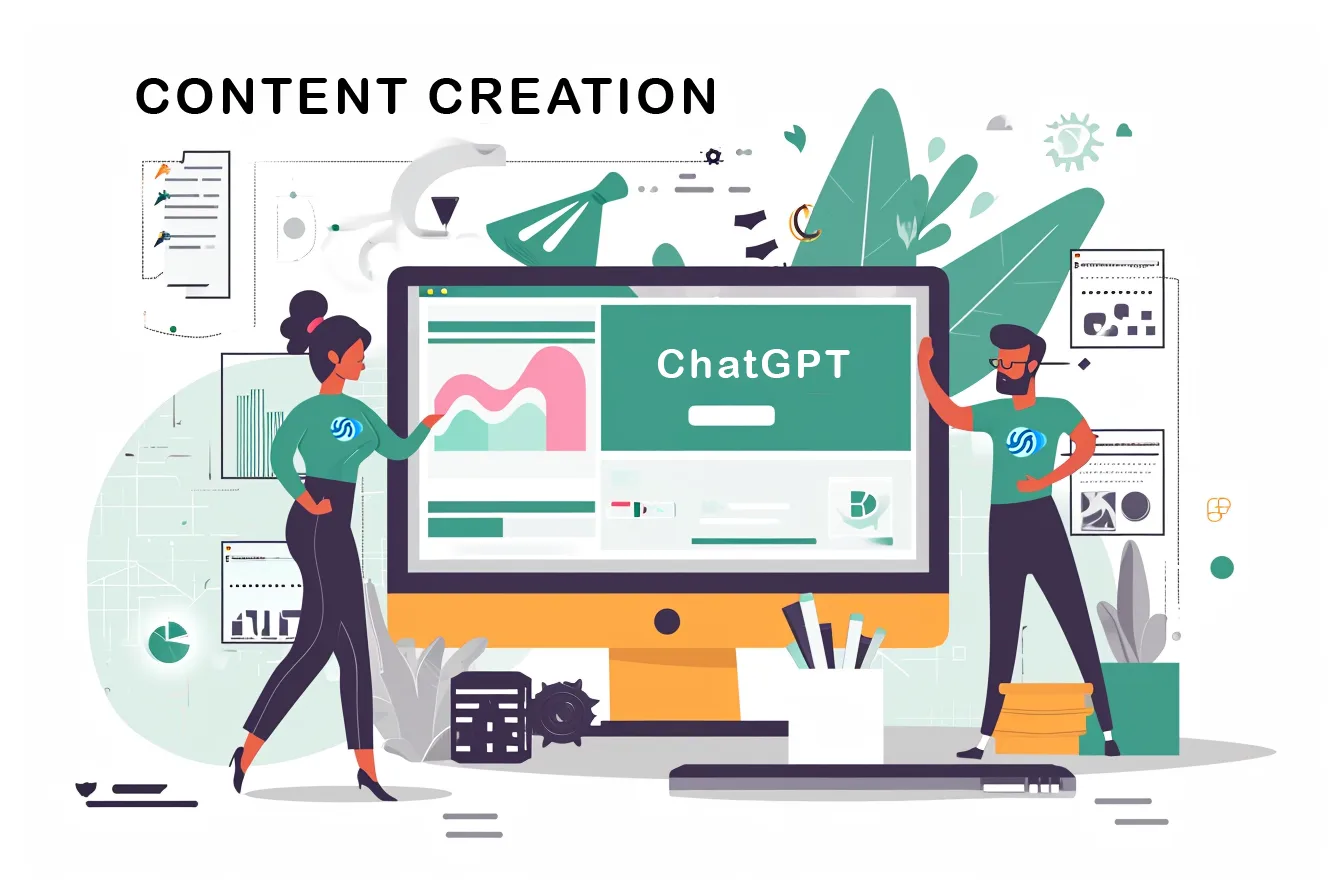Introduction to Prompt Engineering in AI Models
Prompt engineering is a key strategy for extracting the best performance from AI models like GPT-4. This involves crafting prompts that guide the AI in generating more accurate and relevant responses. It’s a blend of art and science, requiring a deep understanding of the model’s capabilities. Experimentation plays a crucial role in discovering the most effective methods for each unique application.
| Section | Key Takeaways |
| Introduction | Overview of prompt engineering and its importance for AI interactions. |
| Clear Instructions | Clarity in prompts is crucial; specific instructions yield more relevant answers. |
| Advanced Strategies | Use personas, delimiters, and external tools for enhanced AI interactions. |
| Complex Tasks | Break down tasks into subtasks for better handling and responses. |
| Systematic Testing | Regular testing and iteration of prompts are essential for optimal performance. |
| Real-World Applications | Prompt engineering’s versatility is showcased in sectors like healthcare, education, and finance. |
| Ethical Considerations | Addressing bias, maintaining transparency, and adhering to regulations are vital for ethical AI use. |
| Future Outlook | Expect more intuitive AI interactions and broader applications across industries. |

The Art of Writing Clear Instructions
The cornerstone of effective prompt engineering is writing clear and concise instructions. The precision of your prompts significantly impacts the quality of the AI’s responses. Here are some strategies and tactics:
Strategies for Clear Instructions:
- Be explicit in your requests to minimize ambiguity.
- Provide sufficient context and details for more relevant answers.
Table: Examples of Improved Prompts
| Less Effective Prompt | More Effective Prompt |
| “How do I add numbers in Excel?” | “How do I add up a row of dollar amounts in Excel, with totals on the right?” |
| “Who’s president?” | “Who was the president of Mexico in 2021, and the election frequency?” |
Tactics for Enhanced Clarity:
- Utilizing specific formats or structures (e.g., bullet points, tables).
- Incorporating examples and step-by-step guides.
Advanced Strategies in Prompt Engineering
In this section, we explore advanced strategies for enhancing the effectiveness of prompts with AI models like GPT-4.
- Persona Adoption: This involves instructing the AI to respond as if it were a specific character or professional, which can be particularly useful for creating engaging and contextually appropriate content.
- Example: “Respond as a knowledgeable historian explaining the significance of the Renaissance.”
- Using Delimiters: Delimiters help in organizing complex prompts by clearly defining different sections or types of requests within a single prompt. They are especially useful for multi-part questions or when requiring varied types of responses.
- Example: “Provide a summary here: [Summary Section] and list three implications: [Implications Section].”
- Iterative Prompt Refinement: This involves gradually modifying and testing prompts to achieve the desired outcome. It’s a process of trial and error, where each iteration brings you closer to the optimal prompt structure.
- Example: Starting with a basic prompt and then adding specifics, context, or constraints based on initial responses.
Utilizing External Tools and Resources
In thissection, we delve into how external tools can be combined with AI models like ChatGPT to enhance performance and capabilities.
- Code Execution for Precision:
- Example: Integrating a Python interpreter allows for the execution of complex mathematical or data processing tasks within the prompt. This is invaluable in scenarios requiring precise computational work.
- Tactic: Use triple backticks to include Python code directly in the prompt for execution.
- Embeddings-Based Search for Informed Responses:
- Example: Utilizing embeddings to search a database of scientific articles allows ChatGPT to provide current and relevant responses in specialized fields like medical research or technological advancements.
- Tactic: Implement embeddings to dynamically pull information from large datasets or knowledge bases, enriching the AI’s responses with up-to-date and accurate information.
Complex Task Handling Through Subtasks
Complex tasks in prompt engineering are best managed by breaking them down into simpler subtasks. This mirrors practices in software engineering, where large systems are divided into smaller, more manageable components. For ChatGPT and similar AI models, this means restructuring a multifaceted task into a series of simpler queries, each handling a part of the overall task.
Tactics:
- Intent Classification: Use this to identify the most relevant instructions based on the user’s query. For example, in a customer service application, classify queries into categories like Billing, Technical Support, and Account Management.
- Example:
- User says, “I need to get my internet working again.”
- AI classifies this into ‘Technical Support’ and ‘Troubleshooting’.
- Example:
- Summarizing Extended Dialogues: In long conversations, summarize previous turns to maintain context without exceeding the AI’s memory limit.
- Example:
- After a long exchange, summarize the key points before proceeding with the next part of the conversation.
- Example:
Systematic Testing and Iteration of Prompts
Systematic testing involves evaluating the effectiveness of different prompts and making iterative improvements. By testing various prompt structures and analyzing their outcomes, we can refine the AI’s ability to understand and respond accurately.
Tactics:
- Comprehensive Test Suites (Evals): Develop tests that are representative of real-world usage. They should contain various test cases to ensure the prompt’s robustness.
- Example: For a prompt designed to provide financial advice, test with a range of scenarios, from simple budgeting queries to complex investment strategies.
- Model-Based Evals: Use model queries to evaluate outputs when there’s a range of acceptable answers.
- Example: In assessing a summary, check for key facts and overall coherence rather than a single correct answer.
Real-World Applications and Case Studies
Implementing prompt engineering in real-world scenarios showcases its practical value. From customer service to content creation, the refined prompts have enhanced the effectiveness of AI interactions.
| Sector | Application of AI with Prompt Engineering |
| Education | Educators employ AI for personalized learning, where prompts guide the AI to tailor content to students’ learning styles and levels. |
| Financial Services | In banking and finance, AI assists in analyzing market trends or customer queries, with prompts ensuring accurate and relevant financial advice. |
| Customer Service | Custom prompts are used to guide AI in resolving specific customer queries, improving response accuracy and customer satisfaction. |
| Content Creation | Writers and marketers use advanced prompting techniques to generate creative and engaging content that aligns with their brand voice. |
| Healthcare | Medical professionals use AI to interpret patient data, where precise prompts assist in accurate diagnosis or treatment suggestions. |
Challenges and Ethical Considerations
While prompt engineering offers vast potential, it also presents challenges and ethical considerations.
- Addressing Bias: It’s crucial to craft prompts that minimize inherent biases, ensuring AI responses are fair and unbiased.
- Transparency and Accountability: Maintaining transparency in how AI models are used and being accountable for their outputs is essential.
- Compliance and Regulation: Adhering to regulatory standards, especially in sectors like healthcare and finance, is vital for ethical AI use.
- Bias and Misinformation: Care must be taken to avoid unintentionally introducing biases or spreading misinformation through prompts.
- Privacy and Security: Ensuring user data privacy and security is paramount, especially when prompts involve sensitive information.
Conclusion and Future Outlook
As we conclude our exploration of prompt engineering for ChatGPT, it’s clear that this field is dynamic and evolving. The advancements in AI and machine learning promise even more sophisticated applications in the future. Staying informed and adaptable will be key to leveraging these advancements effectively.
For more examples and detailed strategies, you can check out OpenAI guide on prompt engineering.
The future of prompt engineering is likely to witness more intuitive interfaces, deeper contextual understanding, and broader applications across industries, reshaping our interaction with AI.

Ravjar Said is an engineer passionate about social impact. In his spare time, he runs Snowball AI – a YouTube channel exploring the intersections of artificial intelligence, education and creativity. Through innovative projects, he hopes to make AI more accessible and beneficial for all. Ravjar loves helping bring people and technology together for good.



